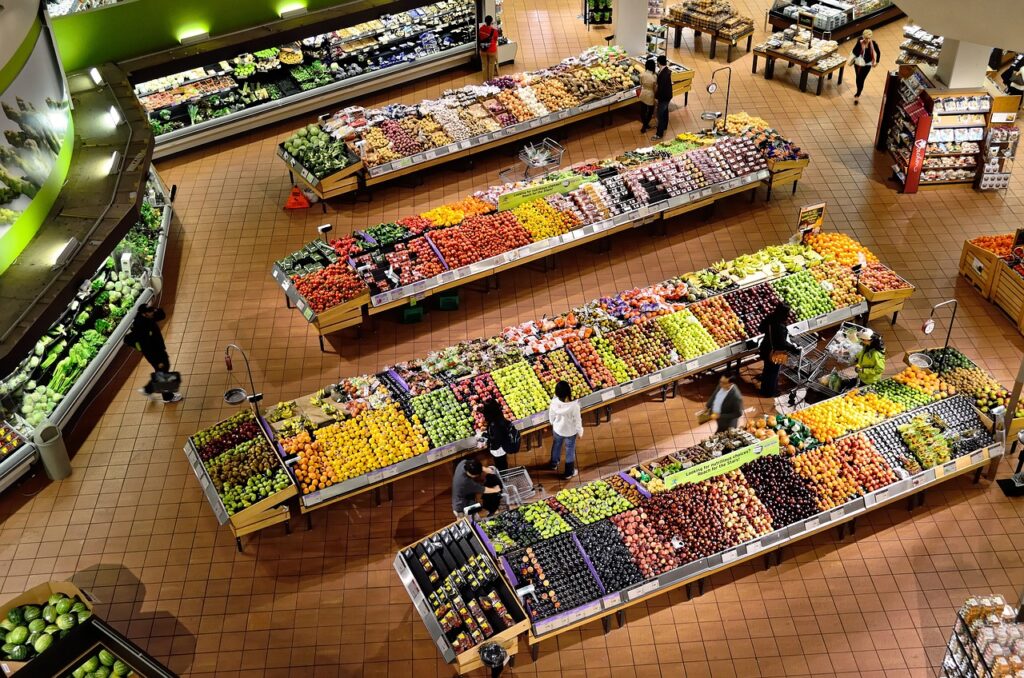I’m sure you’ve been there too: You go into a shop and although you only wanted to look, you ended up buying something. Maybe even something that is actually too expensive. Many shops or even online sellers use a clever sales strategy, they target your emotions, sell image, affiliation or a feeling of being alive. Instead of falling for it, you can learn something for your business.
It already starts with the fact that very few companies leave the way the goods are presented, the furnishings and the external appearance to chance. So it’s worthwhile to walk through shops with your eyes open and focus on that. Let’s take Starbucks as an example. Who on earth would think of buying a coffee for so much money if it didn’t say Starbucks on the cup? Hardly anyone. But it’s not just the label on the cup. Behind Starbucks is a whole box of seduction tricks and well-crafted storytelling.
Seduction to impulse buy
Spontaneous or impulse purchases contribute significantly to turnover in retail. The share is between 30 and 60 percent. Every shopkeeper would be a fool to do without it. So let’s take a look at the tricks.
- First of all, there are the large shopping trolleys. They alone tempt you to pack things that you don’t really need. But emptiness cries out to be filled. We know this ourselves from home – you move into a bigger flat and it doesn’t take long for it to become cluttered.
- Have you ever wondered why the shelving in retail shops is often changed? The reason is that the regular customers then also have to search from time to time and thus perhaps discover something new.
- Expensive products are often placed at eye level. Why? Because people are innately comfortable and don’t like to bend down. So the expensive one is bought. Inexpensive products are more likely to be on the left than on the right of the shelf because most people are right-handed. By the way, this is also the reason why the cash registers in most shops are placed on the left side. So we have to walk around to the left and grab things with our right.
- Special items always attract. If there are other goods in the special offer corner, they are often bought at the same time. And: Red signs suggest that the goods are cheaper.
- Fragrances seduce! A pleasant, non-intrusive fragrance entices you to buy it. It is not for nothing that the bakeries are usually placed at the front of the shops.
- Turn your shop into an obstacle course – this will also make the “fast shoppers” walk more slowly. The same effect is achieved with floors that look as if they have just been freshly polished.
Six important points for your sales strategy
These are just a few examples. There is, of course, more behind sales strategies. Here are a few points that are important for your business to think about:
- Target group analysis: An effective sales strategy always starts with a thorough analysis of the target group. Identify the needs, interests and problems of potential customers so that you or your salespeople can adapt your approach and message accordingly.
- Beziehungsaufbau: Der Aufbau einer guten Beziehung zu Kund*innen ist entscheidend für den Verkaufserfolg. Salespeople should therefore strive to build trust and long-term customer loyalty. This means being responsive to customers’ needs, being reliable and providing excellent customer service.
- Nutzenkommunikation: Kunden wollen wissen, welchen Nutzen ein Produkt oder eine Dienstleistung für sie hat. Salespeople should therefore be able to clearly communicate the benefits and added values and how the product helps the customer solve their problems.
- Handling objections: In the sales process, clients may raise objections or concerns. An effective sales strategy involves understanding these objections and being able to deal with them constructively. It is important to take customers seriously and offer real solutions.
- Upselling and cross-selling: These strategies involve offering additional products or services that may be relevant to the customer. Upselling encourages a customer to upgrade to a more expensive product, while cross-selling offers complementary products or services. Amazon has perfected this strategy because it allows them to increase sales turnover and improve customer satisfaction.
- Closing the sale: Closing the sale is an important step in the sales process. A good sales strategy involves recognising buying signals and acting skilfully to close the sale. This requires negotiation skills, persuasion and the ability to lead potential clients to a positive conclusion.
And beyond that?
Of course, these strategies can vary depending on the industry and the product. It is important that salespeople adapt and continuously improve their strategies to be successful. Effective sales strategies require good market knowledge, an understanding of the competition and the ability to respond to changing customer needs and market trends.
The great art for all – not only for retailers, of course, is to become a brand, as in the Starbucks example. Branded products have the so-called halo effect, the halo. What happens when the damage is done and the company has to switch into crisis mode is what the next blog post will be about.



